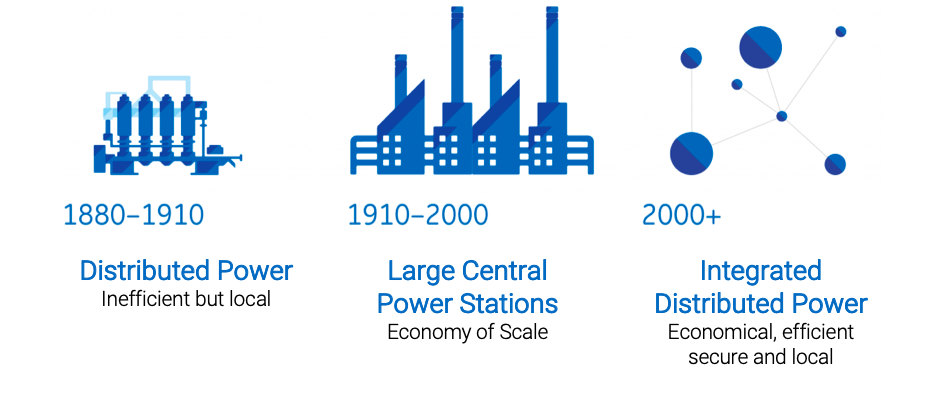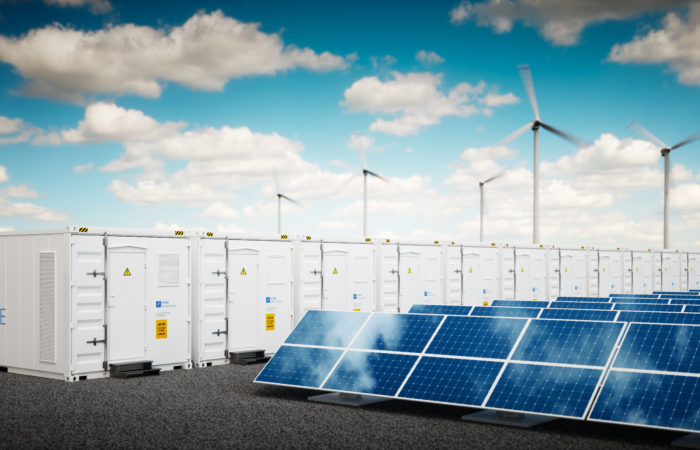 The electrical grid is arguably the most complex machine on Earth and is evolving rapidly from its centralized history of the last century. However, the grid is changing not only physically with the addition of large amounts of variable renewable energy, but in the use of new intelligent control algorithms. These AI algorithms are poised to revolutionize the way we produce, transmit and consume renewable energy in the next grid.
The electrical grid is arguably the most complex machine on Earth and is evolving rapidly from its centralized history of the last century. However, the grid is changing not only physically with the addition of large amounts of variable renewable energy, but in the use of new intelligent control algorithms. These AI algorithms are poised to revolutionize the way we produce, transmit and consume renewable energy in the next grid.
The current grid was not designed to accommodate the diversity of renewable energy sources and the inherent variability of solar and wind creates challenges in meeting variable load. The utility industry is increasingly confronted with variable supply trying to match variable load. It is our supposition that AI can help mitigate this challenge and make renewable energy an equal player in providing the countries electricity.

This article explores 4 ways that AI methods can improve the integration and adoption of renewable energy resulting in a modernized electrical grid supporting the reliability and resilience of the overall grid.
1) AI will improve centralized control centers
2) AI will allow new capabilities for integrating microgrids
3) AI drives new smart consumer devices and value streams and
4) AI optimization techniques will improve the placement and resulting value of Distributed Renewable Energy
Improved centralized control centers: The energy grid is becoming increasingly interconnected as computing, data collection, and devices scale exponentially. This brings new opportunities to use the power of AI algorithms to learn from the big data with new collections of sensor data. This will give grid operators new insights into control methods to cope with renewable energy variability. These algorithms will be focused on things like weather and load predictions making the integration of renewable energy in the bulk power system better understood.
Integration of microgrids: The path to managing distributed energy leads through the widespread adoption of microgrids. As more and more community-level renewable generation (mostly solar) are put in the grid the challenges of balancing energy flows within that grid is getting more acute. However, renewables have a part to play in solving congestion and power quality issues in the distribution grid, and the path includes the involvement of AI-powered control optimization. Because of the dynamic nature of the grid below the substation autonomous controls, and new methods like transactive energy will have an outsized role in this revolution, AI technologies will be integral to the transition. Learning AI Algorithms like Adaptive Dynamic Programming and intelligent multi-agent systems hold great promise to not only provide real-time control but improve system optimization over time as new generation sources and devices are integrated.
New smart consumer devices and value streams: We are already seeing the remaking of the home with distributed intelligent devices but this trend is moving to the renewables world with smart batteries coupled to rooftop solar, EV chargers and energy management systems. AI will drive most of these new products and will provide new ways for the consumer to save money with transactive energy controls that work on real-time energy pricing. These AI-powered control methods can unlock new value streams to consumers and support things like smart inverters providing various grid reliability services. Linked to these AI algorithms in devices smart ledger value transfer is a possibility although there is much research needed in this area.
Improve the placement and resulting value of Distributed Renewable Energy: The value of Distributed Energy Resources (DER) in the distribution system is highly dependent on where it is placed within the topology of the system and how it is operated. For instance, a battery located on a constrained distribution line has greater value (offsetting infrastructure rebuilds) than one that is being only used for solar array load shifting. One asset providing multiple values to the grid can promote new valuation models increasing the opportunities for renewable energy to contribute. AI methods can not only find the most valued locations for DER but AI driven controls can operate them in dynamic ways that increase the contributions as conditions evolve.
These four areas where AI techniques will contribute to renewable energy integration will translate into a new, improved and modernized electrical grid are only a few of the ways that AI will change how we interact with the grid. These new methods and products will allow the distribution system to integrate high penetration levels of renewable energy, lowered carbon footprints, and more consumer choices. This will truly be the next, next grid.
I will be speaking on a similar topic in the Disruptive Technology track of the 2019 IEEE Women in Engineering International Women’s Leadership Conference (IEEE WIE ILC) held on May 23-24th in Austin, TX. See http://ieee-wie-ilc.org for more information.
This article was published in by Renewable Energy World Magazine on April 23, 2019



